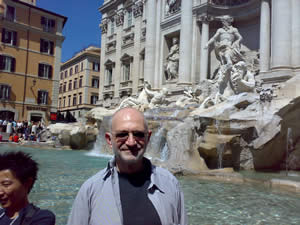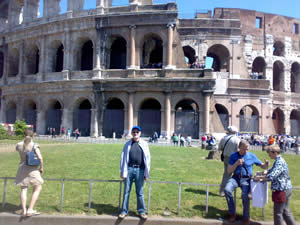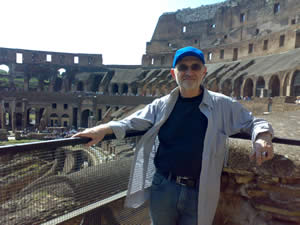Research
Samuel Paley Legacy Project
Samuel Paley IEMA Library
Opening of the Samuel Paley Memorial Library housed in the Department of Anthropology, at SUNY Buffalo.
Seyitömer Höyük
Seyitömer Höyük in an archaeological site that sits 350 km south of Istanbul, at an important juncture between the Mesopotamian and Mediterranean worlds. Seyitömer Höyük’s economy centered on pottery and textile production, and supported a vibrant village that was inhabited for over two millennia. The site’s strategic location on a bustling overland trade route that traversed the heartland of Anatolia ensured its economic prosperity through many successive phases of occupation. Rich assemblages of artifacts and well-preserved architecture span the Early Bronze Age through the Roman period, together representing the longest, continuous sequence of occupation in western Turkey.
The late Prof. Samuel Paley made important contributions to our understanding of this incredible site. Beginning in 2007, he led a team of students from SUNY Buffalo/IEMA in a field school, where he supervised the excavation of the Middle Bronze Age settlement. He trained students in methods of archaeological excavation and laboratory analysis, including GIS, lithic analysis, and ceramic analysis. Their experience was enriched with staff lectures on the specific material culture from Seyitömer Höyük, and reports from specialists about the collective achievements of the project. Prof. Samuel Paley continued his involvement with the excavation by leading additional field schools in 2008 and 2009, eventually reaching Early Bronze Age levels with his team.
Prof. Samuel Paley’s work at Seyitömer Höyük is significant not only because he led a top notch field school program there, but also because his work helped surmount a unique archaeological challenge-that of running a rescue excavation with the best possible archaeological methods, in a limited timeframe. Seyitömer Höyük sits on top of a 12 million ton exploitable coal reserve, and a private company signed a protocol granting archaeologists eight years to fully excavate the 150mx150m site in 2006. Prof. Samuel Paley’s work during this period made a lasting contribution to this rescue effort, because he and his team recovered and documented information that would otherwise have been lost forever, a casualty of modern industrial growth.
SUNY Buffalo/IEMA is committed to supporting the legacy of Prof. Samuel Paley with the Samuel Paley Legacy Project, directed by Dr. Peter F. Biehl. This project supports future field seasons at Seyitömer Höyük, and acknowledges Prof. Samuel Paley’s contributions in forthcoming publications. Laura Harrison, a Ph.D. candidate in the Department of Anthropology at SUNY Buffalo, will lead a field school at Seyitömer Höyük in 2014 and 2015, the final two excavation campaigns at the site. Ms. Harrison’s field school is modeled directly on Prof. Samuel Paley’s project, and aims to educate students in methods of archaeological excavation and analysis, while providing a rich, multicultural experience. In addition, field school participants will learn about Prof. Samuel Paley’s contributions to the rescue excavation, and his role as an ambassador of cross-cultural understanding between Turkish and American teams. Prof. Samuel’s legacy will be supported in print, as well, through acknowledgement of his contributions to research at Seyitömer Höyük in forthcoming publications. These publications will be available to the international scholarly community, as well as SUNY Buffalo students, at the Samuel Paley Memorial Library housed in the Department of Anthropology, at SUNY Buffalo.
The Central Palace of Tiglath-pileser III at Nimrud
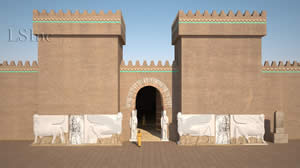
The Polish Centre of Mediterranean Archaeology returned to re-excavate the site of the Central Palace of Tiglath-pileser III (744-727 BCE) at Nimrud (ancient Kalhu) near the city of Mosul in northeastern Iraq in 1974, because the Palace was the least known and least understood of the buildings on Nimrud’s citadel. It was hoped that new excavations would elucidate this poorly preserved Palace with more up-to-date excavation techniques and new finds. The excavation was supposed to make the Central Palace a source for the study of the life and times of this important ancient Assyrian king. Many fragments of Assyrian bas-relief, not only those of Tiglath-pileser III, were discovered, some re-excavated in the trenches of the previous excavator, Austen Henry Layard. Then the field director, Janusz Meuszynski, died in 1976, and the final reports were never completed.
There are too few examples of Tiglath-pileser’s bas-reliefs in the total corpus of Assyrian bas-relief to allow the results of the Polish project to remain unpublished. The Polish finds are an extremely valuable resource. An additional and disturbing fact is that individual bas-relief sculptures (some with inscriptions) have been appearing on the antiquities market, looted from the site museum storerooms at Nimrud. Some of the bas-reliefs have been broken up into pieces to obscure their origin and in order to obtain more money from several rather than from the one original fragment. Many of the better examples of bas-relief from this excavation are now on the international art market as a result of illicit activities (theft) at Nimrud subsequent to the Gulf War of 1991.
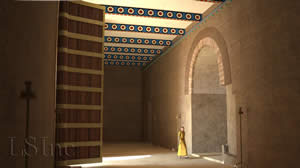 What we know of Tiglath-pileser’s Palace is that many of the themes of earlier and later sculpture are to be found on its wall decoration. And, there are new motifs and the syntax of the sculpture, the way scenes were portrayed, the placement of the vignettes of individual parts of scenes on the faces of the slabs, and details of the garment decorations have their own character and style. In addition, several other buildings were discovered, dating before and after Tiglath-pileser, expanding our knowledge of this part of the citadel and the vast expanse of Ashur-naisr-pal II’s great Northwest Palace.
What we know of Tiglath-pileser’s Palace is that many of the themes of earlier and later sculpture are to be found on its wall decoration. And, there are new motifs and the syntax of the sculpture, the way scenes were portrayed, the placement of the vignettes of individual parts of scenes on the faces of the slabs, and details of the garment decorations have their own character and style. In addition, several other buildings were discovered, dating before and after Tiglath-pileser, expanding our knowledge of this part of the citadel and the vast expanse of Ashur-naisr-pal II’s great Northwest Palace.
Richard Sobolewski and Samuel Paley were to publish the results of the excavation in digital format with top plans, photographs, and comparative material from museums and Layard’s archives. Learning Sites is completing the publication. The digital format will allow the reader to access all the relevant data through appropriate links from interactive 3D computer models of the remains and in reconstructed panels of the wall decorations. Fragments of bas-relief and inscriptions from the periods of Ashur-nasir-pal II and Shalmaneser III discovered during the course of the excavation will also be incorporated into this publication, as well as the scant remains of the post-Assyrian buildings built on the Central Palace site.
The research and compilation of the manuscript for this final publication were made possible through a generous grant from The Shelby White – Leon Levy Program for Archaeological Publications, and the generosity of the Polish Centre of Mediterranean Archaeology, the UB Foundation, and individual supporters.
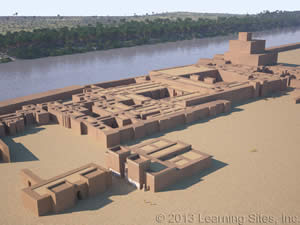
Tel Ifshar, Israel
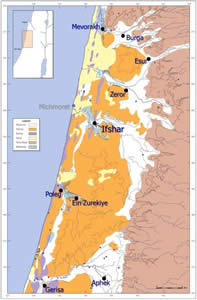 Tel Ifshar is a 4.4 ha (11 acre) mound in the Central Sharon Coastal Plain of Israel only five km from the modern coastline, at the narrowest place between the Mediterranean sea and Central Highlands. The site’s location on the perennial and potentially navigable Alexander River in the lower reaches of a verdant alluvial plain offered a potential agricultural hinterland, ample grazing areas, and a position on both a longitudinal and a latitudinal route.
Tel Ifshar is a 4.4 ha (11 acre) mound in the Central Sharon Coastal Plain of Israel only five km from the modern coastline, at the narrowest place between the Mediterranean sea and Central Highlands. The site’s location on the perennial and potentially navigable Alexander River in the lower reaches of a verdant alluvial plain offered a potential agricultural hinterland, ample grazing areas, and a position on both a longitudinal and a latitudinal route.
From 1979 through 1992, within the context of what was known as the Emek Hefer Archaeological Research Project (EHARP), the late Professor Samuel Paley of SUNY Buffalo, together with Dr. Yosef Porath of the Israel Antiquities Authority (IAA), carried out ten seasons of excavation at the site that produced evidence of human activity at the site from late prehistory through the Byzantine period. Intermittent settlement at Tel Ifshar has been documented beginning in the Early Bronze Age, but the most significant remains belong to the Middle Bronze Age IIa (1925-1750 BCE), of which eight principal architectural horizons were found, four of which ended in conflagrations that left extensive well-preserved complete or restorable ceramics, stone tools, botanical and faunal remains sealed in their original locations. These results were reported in a number of preliminary publications and were showcased in a travelling exhibition entitled “Among Ancient Empires” that was hosted at the Jewish Museum in New York and the Lockwood Library at SUNY Buffalo 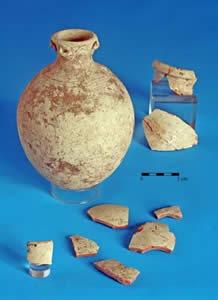 in 1986-1987. Following a final study season in 1995, the project went into hiatus, as Prof. Paley began work in Turkey and Y. Porath was appointed IAA archaeologist of Caesarea Maritima. In 2006, with the first of two Israel Science Foundation grants, Dr. Ezra Marcus of the Recanati Institute of Maritime Studies at the University of Haifa, Israel, initiated a project in collaboration with Prof. Paley and Dr. Porath to study the Middle Bronze Age remains and bring them to final publication. This new project builds on previous research and involves specialists in various fields: groundstones (J. Ebeling); chipped stones (S. Rosen and D. Yegorov); archaeozoology (I. Ktalav and G. Bar-Oz); archaeometallurgy (S. Shalev and E. Marcus); dendroarchaeology (N. Liphschitz); radiocarbon chronology (E. Marcus); as well as incorporating the previous archaeobotanical analysis of M. Cherfnoff.
in 1986-1987. Following a final study season in 1995, the project went into hiatus, as Prof. Paley began work in Turkey and Y. Porath was appointed IAA archaeologist of Caesarea Maritima. In 2006, with the first of two Israel Science Foundation grants, Dr. Ezra Marcus of the Recanati Institute of Maritime Studies at the University of Haifa, Israel, initiated a project in collaboration with Prof. Paley and Dr. Porath to study the Middle Bronze Age remains and bring them to final publication. This new project builds on previous research and involves specialists in various fields: groundstones (J. Ebeling); chipped stones (S. Rosen and D. Yegorov); archaeozoology (I. Ktalav and G. Bar-Oz); archaeometallurgy (S. Shalev and E. Marcus); dendroarchaeology (N. Liphschitz); radiocarbon chronology (E. Marcus); as well as incorporating the previous archaeobotanical analysis of M. Cherfnoff.
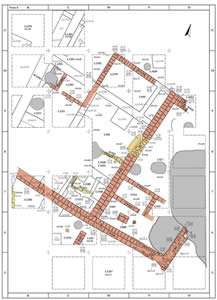 Among the insights that have been gleaned thus far from the renewed analysis regarding the Middle Bronze Age at Tel Ifshar are that after a long gap following the Early Bronze Age I settlement (fourth millennium BCE), the site was re-inhabited only in the late 20th century BCE by a culture that had connections with the northern Levant and Egypt from its very beginning, including pottery and imported cedar wood. This sequence of rural settlements (Phase A) was followed by a 600 m2 multi-story elite or public building with two wings on either side of a central courtyard (Phase B). The affluence of this building is underscored by 1.20 wide external walls that supported a mudbrick and imported cedar wood superstructure, as well as imported pottery vessels. The numerous ceramic finds sealed in situ when the building was destroyed sometime between 1850-1800 BCE, indicate that the east wing served for the storage, cooling, mixing, flavoring and serving of alcoholic drinks (wine?) while the upper story was apparently used for social drinking in fancy, probably imported vessels,. In the subsequent Phase C, the elite building was rebuilt along largely the same plan, only to be destroyed in a second fieryconflagration towards the end of the 19th-early 18th century BCE. After a hiatus (Phase D), new elite and other buildings were established to the west and south (Phase E) and the site of the former elite structure became an area devoted to the storage of agricultural produce (granaries, silos and bins). When this phase was destroyed by fire sometime in the early 19th-early 18th century BCE, over 19,000 grains of emmer wheat were left charred in one granary chamber. The subsequent Phases F and G were of a much more modest domestic character, perhaps attesting to an economic decline that appears to be in a region-wide during the mid-18th century. At Tel Ifshar, radiocarbon dates the last destruction event to no later than ca. 1750 BCE.
Among the insights that have been gleaned thus far from the renewed analysis regarding the Middle Bronze Age at Tel Ifshar are that after a long gap following the Early Bronze Age I settlement (fourth millennium BCE), the site was re-inhabited only in the late 20th century BCE by a culture that had connections with the northern Levant and Egypt from its very beginning, including pottery and imported cedar wood. This sequence of rural settlements (Phase A) was followed by a 600 m2 multi-story elite or public building with two wings on either side of a central courtyard (Phase B). The affluence of this building is underscored by 1.20 wide external walls that supported a mudbrick and imported cedar wood superstructure, as well as imported pottery vessels. The numerous ceramic finds sealed in situ when the building was destroyed sometime between 1850-1800 BCE, indicate that the east wing served for the storage, cooling, mixing, flavoring and serving of alcoholic drinks (wine?) while the upper story was apparently used for social drinking in fancy, probably imported vessels,. In the subsequent Phase C, the elite building was rebuilt along largely the same plan, only to be destroyed in a second fieryconflagration towards the end of the 19th-early 18th century BCE. After a hiatus (Phase D), new elite and other buildings were established to the west and south (Phase E) and the site of the former elite structure became an area devoted to the storage of agricultural produce (granaries, silos and bins). When this phase was destroyed by fire sometime in the early 19th-early 18th century BCE, over 19,000 grains of emmer wheat were left charred in one granary chamber. The subsequent Phases F and G were of a much more modest domestic character, perhaps attesting to an economic decline that appears to be in a region-wide during the mid-18th century. At Tel Ifshar, radiocarbon dates the last destruction event to no later than ca. 1750 BCE.
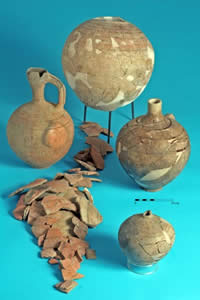 This renewed project has enjoyed the support of SUNY Buffalo and IEMA, where much of the project’s documentation is still stored in the Paley archives. In addition to completion of the research described above, it is hoped that the results will be made accessible through a virtual internet-based museum. The renewal of collaboration with archaeologists in Israel (E. Marcus and Y. Porath) is also being strengthened by the newly begun research of Dan Griswold, a University of Buffalo Ph.D. student, who will be studying Tel Ifshar’s important Late Bronze Age remains as part of his doctoral dissertation. Thus, the vision that led SamPaley’s and Y. Porath to this extraordinary site, which was excavated using a sampling strategy with a foresight unparalleled at the time, continues to generate research results with broad implications for the immediate region and the greater Near Eastern world.
This renewed project has enjoyed the support of SUNY Buffalo and IEMA, where much of the project’s documentation is still stored in the Paley archives. In addition to completion of the research described above, it is hoped that the results will be made accessible through a virtual internet-based museum. The renewal of collaboration with archaeologists in Israel (E. Marcus and Y. Porath) is also being strengthened by the newly begun research of Dan Griswold, a University of Buffalo Ph.D. student, who will be studying Tel Ifshar’s important Late Bronze Age remains as part of his doctoral dissertation. Thus, the vision that led SamPaley’s and Y. Porath to this extraordinary site, which was excavated using a sampling strategy with a foresight unparalleled at the time, continues to generate research results with broad implications for the immediate region and the greater Near Eastern world.
The Cylinder and Stamp Seals from the Ancient Near East from the Collection of the Buffalo Museum of Science
The Buffalo Museum of Science has the largest unpublished public collection of cylinder and stamp seals (435), dating from the 4th millennium BCE until the early medieval period. The seals derive from the cultures of the central and eastern Mediterranean, the Middle East and Iran, though the bulk could be said to be “Mesopotamian.” This is probably the most comprehensive collection in a public institution in the US in terms of types of seals and their iconography. The collection is particularly strong in northern Mesopotamian and Syrian seals. The museum once displayed representative examples of the major typologies deemed important half a century ago, but the collection is no longer on view.
One of the great specialists of cylinder and stamp seals in the United States was Prof. Edith Porada who taught at Columbia University Department of Art History and Archaeology from 1964 until her death in 1997. Sam Paley was one of her earliest PhD students and it was under her direction that he wrote his dissertation on the Palace Reliefs of King Assurnasirpal II. In the 1980’s, Prof. Porada asked Sam Paley to join him in the publication of this important collection at the Buffalo Museum of Science and he readily agreed having recently begun his professorship at SUNY Buffalo. Together they reviewed the collection, checking through and updating much of the work of Dr. Harald Ingholt (see his “World Famous Cylinder Seals Reflect 3,000 Years of History,” Hobbies. The Magazine of the Buffalo Museum of Science 25/1, 1944 pp 2-12). All the seal impressions were made by Dr. Porada and Dr. Paley when they began the project. The petrology identifying all the seal stones was completed by Dr. Michael Gramly, former curator of Anthropology at the Buffalo Museum, who also measured all the seals. When Dr. Porada was no longer able to work, Dr. Paley asked Professor Holly Pittman at the University of Pennsylvania to join him together with Dr. Judith Lerner and Dr. Erica Ehrenberg. To this core group, Sam Paley added a fifth colleague, Dr. Elif Genc, visiting scholar from Turkey to address the second millennium BC (North Syrian/ Southern Anatolian) material. Additional assistance has been provided by Dr. Karen Sonik and by Ms. Anastasia Amrhein, currently a PhD student at the University of Pennsylvania.
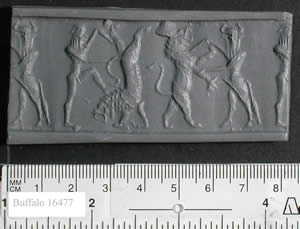 The collection was assembled beginning with the earliest years of the Museum, but many were acquired in Europe, mainly in Paris, during World War II. Some seals came in groups from important European and American dealers. Some seals were gifted to the Museum when a patron bought for himself. Some of the European dealers first loaned the seals, perhaps for safekeeping, but then sold them to the museum because they needed money during and just after the war.
The collection was assembled beginning with the earliest years of the Museum, but many were acquired in Europe, mainly in Paris, during World War II. Some seals came in groups from important European and American dealers. Some seals were gifted to the Museum when a patron bought for himself. Some of the European dealers first loaned the seals, perhaps for safekeeping, but then sold them to the museum because they needed money during and just after the war.
There is even a group that belonged to the well-known Iranologist, Dr. Ernst E.Herzfeld, who sold them to the Museum through his dealer. Another is a gift from an Iranian through diplomatic channels. Today because of looting, the bar has been raised for legal trade in antiquities, and archaeologists oppose any buying and selling in the market. But all these seals were added to the Museum’s collection in times when such practices were tolerated.
The collection’s major benefactor was the Buffalo attorney, Chauncey J. Hamlin (1881-1963), a legendary collector, patron of exhibitions, a member of the Council of American Association of Museums, and a first president of the International Council on Museums (ICOM), who visited Paris and New York on “shopping expeditions.” Much of his personal collection was “gifted” to the Museum including seals (he bought for himself while buying for the Museum). Seals were often given away as a reward for a larger purchase (see the definition of money in Charles J. Opitz, The Ethnographic Study of Traditional Money. A Definition of Money and Descriptions of Traditional Money, First Impressions Printing, Inc. Ocala, 2000, pp. 6-7), a practice not then deemed to be untoward. Thus, to study this collection is also to study the collecting habits of a generation of collecting gentlemen and ladies and is an important part of our history of collecting in the United States. Although interest in and private collecting of ancient art and objects is both a European and American phenomenon, the importance of individuals, rather than the State, in amassing art from other lands and cultures is quintessentially American.
The introductory chapters of the final publication will address the history of the collection and collecting. These will be followed by the presentation of the entire collection both in print through the Buffalo Museum of Science publication series and through an interactive, on-line database, thereby making it available to the public as well as to scholars. Unlike the print catalog, the on-line catalogue will allow the user to consider the seals from many different aspects, including the order in which they were acquired, from which dealer or collector allowing a consideration of the inner relationships of each group of seals.
The impressions have been resident on long-term loan outside the Museum at sites that made them accessible for research when the project moved to its second phase after Dr. Porada’s death: 4th and 3rd millennium BCE seals are at the University Museum, University of Pennsylvania, where they are under the keep of the Curator of Glyptic, Near Eastern Secton, Dr. Pittman; the remainder of the impressions is at the J. Pierpont Morgan Library, under the care of Mr. Sidney Babcock, Curator of Seals and Tablets, where Dr. Lerner and Dr. Ehrenberg can work together. These impressions will remain at these to sites for reference during the project. A second set of impressions remains at the Buffalo Museum. The Museum has made its files available to these scholars, including all the correspondence associated with the collection, the records of the sales and acquisition documentation, as well as the names of the dealers and collectors who were the sources for the seals that Hamlin and others—but principally Hamlin—acquired for himself and for the Museum. A searchable database of the collection along with a descriptive catalog entry with relevant comparisons has been completed. The introductory essays on the history of the collection and its place in American collections are in preparation. The final step in the preparation of the manuscript will be the production of publication quality photos of the seals and their impressions. Once funding is secured, this part of the project will be completed, and the manuscript can be assembled for production both in print, and through an online digital data base.
In Memoriam, Professor Samuel Paley
The Classics Department mourns the loss of Professor Samuel Paley,
who passed away on March 31, 2010 in his New York City home, surrounded
by loving friends and family.
Professor Paley earned his Ph.D. in Middle Eastern Languages and
Cultures from Columbia University in 1974. He was an international
authority on Ancient Near Eastern and Judaic cultures, with extensive
publications on Near Eastern archaeology. He directed archaeological
field projects in Turkey, and curated several exhibitions of Near
Eastern antiquities. His early work on three-dimensional digital
reconstructions of ancient temples and monuments put him in the vanguard
of those exploring new modes of disseminating knowledge of antiquity.
He was a great guardian of cultural and intellectual heritage, and
played an important role in securing the cultural treasures of Iraq at
the outset of the Iraq war.
Locally, Sam was a vibrant presence in the Jewish community of
Western New York. He founded UB’s Judaic Studies program in 1992, and
was religious director of Temple Emanu-El in Batavia. His dedicated
cultivation of the study of Judaism in all its facets, including his
teaching of Hebrew, culminated in the recent establishment of UB’s
Institute for Jewish Thought, Heritage, and Culture.
The Classics Department especially feels the loss of our colleague.
In addition to shouldering the burden of teaching most of the
department’s courses in the Ancient Near East, he served as Chair of the
Classics Department and participated in university governance with his
continued work in the faculty senate. He was especially loved by his
students: he expanded their intellectual horizons with his rigor
(exemplified, often to their initial dismay, by his insistence on
language learning); he introduced them to the excitement of
archaeological excavation; and was always willing to offer special
tutorials on his areas of expertise, such as Akkadian or Biblical
Hebrew. Sam exuded optimism and kindness, and his sardonic humor
lightened the atmosphere of many a faculty meeting. We will miss him.
Photographs
Tel Ifshar
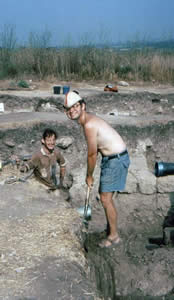
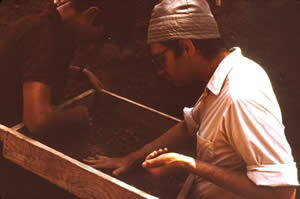
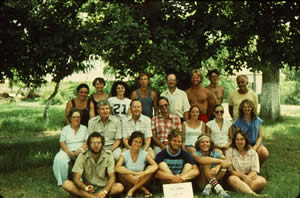
Troy, 2006
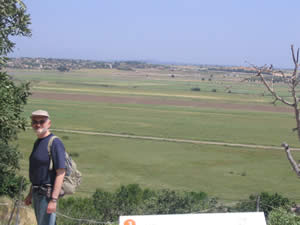
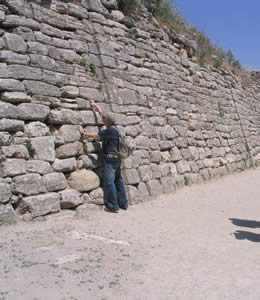
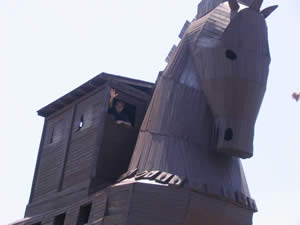
New York, 2006
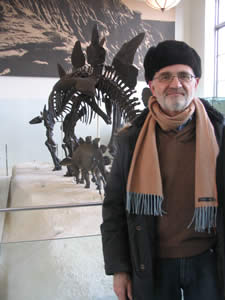
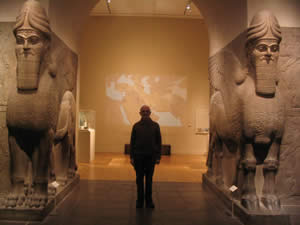
Vienna, 2006
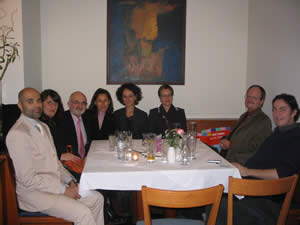
Istanbul, 2007
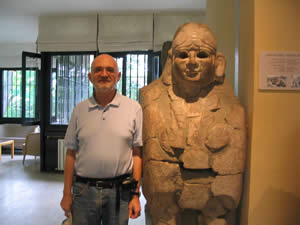
Kutahya, 2007
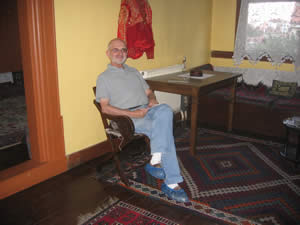
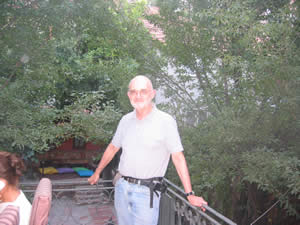
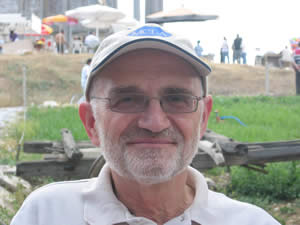
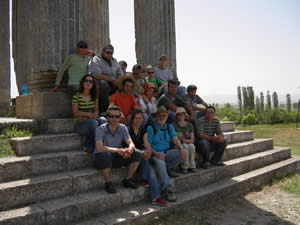
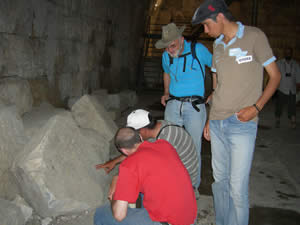
Vienna, 2007
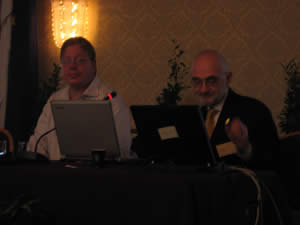
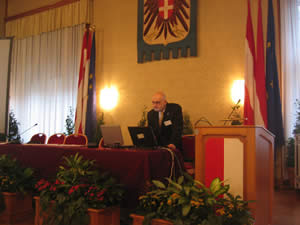
Rome, 2008
